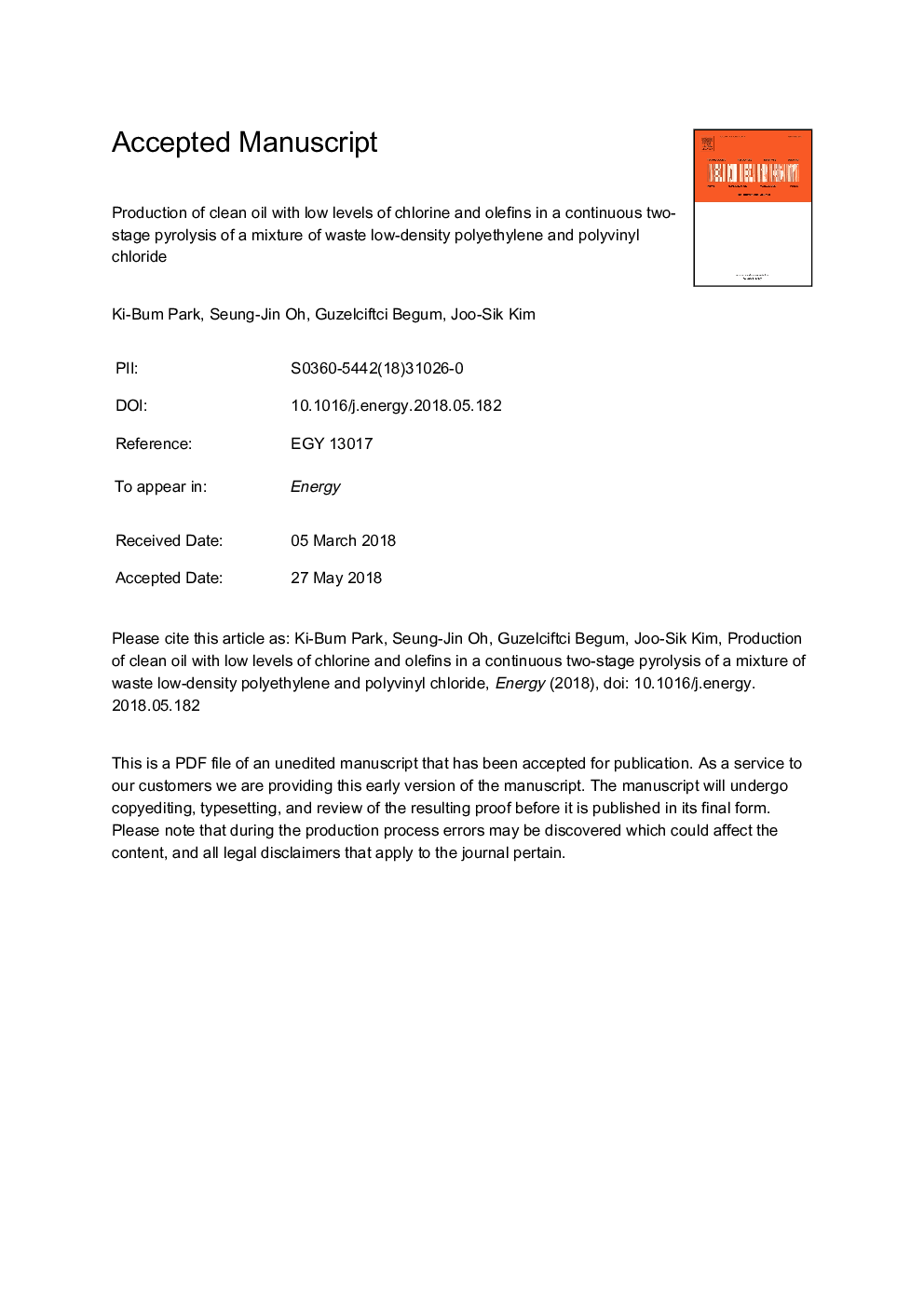| Article ID | Journal | Published Year | Pages | File Type |
|---|---|---|---|---|
| 8071238 | Energy | 2018 | 36 Pages |
Abstract
In this study, a continuous two-stage pyrolyzer consisting of an auger reactor and a fluidized bed reactor was applied to produce an oil with a low level of chlorine from a mixture of low density polyethylene and polyvinyl chloride waste. In the experiment, the auger reactor operated at 300-400â¯Â°C, thus releasing HCl prior to the main pyrolysis in the fluidized bed reactor. The auger reactor also played a role in elevating vibrational modes of molecules to promote the production of ethene, propene, and 1,3-butadiene. The yields of those monomers totaled 29â¯wt.%. Pyrolysis oils obtained from the fluidized bed reactor were enriched with aromatics up to 95â¯wt.%. Together with the two-stage pyrolyzer and a lime hot filter, a pyrolysis oil having only 9.25â¯ppm chlorine could be obtained. This value is the lowest ever reported. This study showed that a two-stage pyrolyzer together with a lime hot filter could produce a pyrolysis oil with a very low chlorine content. Further, this work implies that the production of valuable monomers from the pyrolysis of polyolefins can be enhanced when a two-stage pyrolyzer is applied.
Related Topics
Physical Sciences and Engineering
Energy
Energy (General)
Authors
Ki-Bum Park, Seung-Jin Oh, Guzelciftci Begum, Joo-Sik Kim,
